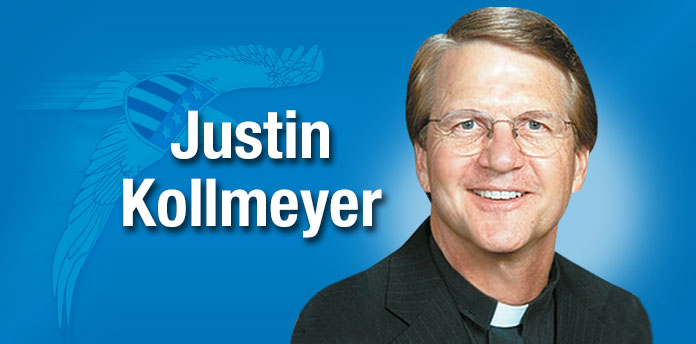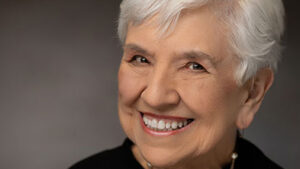For years every Saturday I sent out a Constant Contact phone call to all my congregation and all our local visitors. My words were always quite similar. Oh, each Sunday or each season had specifics for sure, but I always said, “I invite you and encourage you to attend one of the services here tomorrow. We’ll have the great contemporary service at 9:15 and Sunday School at 10:20.”
Then these words rolled off my tongue and out of my heart, “And we’ll have the beautiful and majestic liturgical service at 11:15.”
I happen to be a person/pastor who loves both contemporary worship and liturgical worship. I know not everybody does. In fact, my experience tells me most people have one or the other as their only favorite.
I know this: God receives both kinds of worship, both kinds of music as true worship of Him. My prayer continues to be that both forms will focus on Him, and on Him only, and that neither will turn inward and focus on the form of worship and not singularly on God. Let us not worship our worship. Amen.
My comments today are about liturgical worship. As I mentioned above, I quite naturally refer to it as “the beautiful and majestic liturgical worship.” Most recently at the funeral of Queen Elizabeth the world saw and experienced the “beauty and majesty” of liturgical worship and music. Granted, that was right at the epitome of liturgical worship, as is the Pope’s Christmas Eve Mass in St. Peter’s Cathedral, but all liturgical worship has this same “beautiful and majestic flavor.”
What makes liturgical worship liturgical, however, is not actually the “sights and sounds,” but rather simply the “repetitive order” in which these things take place. The “liturgy” is simply the ancient, and Biblically grounded, repetitive order of what takes place in the service. This order goes back centuries and is preserved most prominently in Roman Catholic, Greek Orthodox, Lutheran, Church of England, and Episcopal churches, with liturgy in lesser degrees in many other churches as well.
What, then, is this “repetitive order,” this “liturgy?” It is this.
The Prelude. Beautiful music, most often a pipe organ, to set the mood and spiritual nature of the worship to follow. An instruction by many churches at this time even gently proclaims, “We talk to God before the service and to each other after the service.”
Confession and Forgiveness. This is “corporate,” by all the worshippers at the same time, yet each receiving the forgiveness of God as pronounced in Jesus’ Name by the pastor/priest.
Entrance Hymn. Here is where the “majesty” begins to show forth as the Cross, lighted candles, and worship leaders process up the center aisle toward the front, the chancel.
The Apostolic Greeting. “The grace of our Lord Jesus Christ, the love of God, and the communion of the Holy Spirit be with you all.” The worshippers respond, “And also with you.”
The Canticle of Praise. Again, this is beautiful and majestic music and words. Often this is the words of the angels at the announcement of Jesus’ birth to the shepherds. “Glory to God in the highest …” An alternative points directly to the Holy Communion to follow, “This is the feast of victory for our God. Alleluia …”
The Prayer of the Day. A thematic prayer tied to the Scripture lessons appointed for the day.
The Scripture Readings. The Church has developed a three-year rotation of Bible readings. This “lectionary” (list of “readings”) uses the three years to have the Gospel accounts of Matthew, Mark, and Luke emphasized each in a full year, with the Gospel of John scattered throughout each of the three years.
The lectionary includes for each Sunday an Old Testament reading, a Psalm to be read or chanted “responsively” (pastor and people back and forth by verses), and a New Testament reading not from the Gospels. After three years, this cycle repeats with the same readings for each Sunday of the “Liturgical Calendar Year.” I will write about that in a future article.
Old Testament Reading
Psalmody (sung/chanted)
Second Reading from the New Testament
Gospel Acclamation (sung). “Alleluia, Lord to whom should we go? You have the words of eternal life. Alleluia. Alleluia.”
Holy Gospel. Again, from Matthew, Mark, Luke, or John.
Sermon. Usually based upon the Gospel appointed for the day, but latitude is certainly allowed according to the heart of the preacher and the occasion in the congregation. Emphasis in our Lutheran preaching is always first of all on God’s Law, which convicts and humbles us with our sin and sins, and then the sweet word of God’s Gospel in the life and love of Jesus Christ, who died on the cross to forgive us all our sins and rose again that we, too, might have eternal life, and have His joy and power in our lives right now.
Hymn of the Day. Thematic to the sermon, from the repertoire of the great hymns of the faith.
Profession of Faith. Liturgical churches make profession of faith by declaring the words of either the Apostles’ Creed or the Nicene Creed, both emphatic declarations of our belief in One God, yet Father, Son, and Holy Spirit.
Prayers of the Church. Several petitions of both praise and thanksgiving to God and also asking for those things that God might grant for His Church and all people. Pastor: “Let us pray for the whole people of God in Christ Jesus, and for all people according to their needs.”
Sharing of the Peace. This is sometimes simply between the pastor and the people answering collectively, but sometimes it is also people actually offering “The Peace of the Lord” individually to each other with an appropriate handshake or hug.
Offering. Yes, our tithes and offerings for the Work of Christ through the Church and in the world.
Offertory. A sung verse to bless the offerings given.
Offertory Prayer. A prayer to bless the offerings given.
The Great Thanksgiving. This is the overall name of the celebration of Holy Communion, which is to follow.
Dialogue. “The Lord be with you.” “And also with you …”
Proper Preface. Communion prayer specific to the liturgical day.
Holy, Holy, Holy. Singing, “Hosanna in the highest …”
Prayer of Thanksgiving. This is the long prayer of remembrance of, and thanksgiving for, all that God has done throughout Biblical history, including the words spoken by Jesus on the night He was betrayed, in which He blessed bread and wine and gave it to His disciples as His Body and Blood, now the Holy Communion.
The Lord’s Prayer
Distribution of Holy Communion. Those who truly believe that the bread and wine are Jesus’ Body and Blood given and shed for the forgiveness of their sins and the strengthening of their faith, eat and drink accordingly.
Singing during Communion. Soft hymns of assurance.
Post-Communion Prayer
Benediction. “The Lord bless you and keep you. The Lord make His face to shine upon you. The Lord lift up His countenance upon you. And give you His peace. In the Name of the Father, and of the Son, and of the Holy Spirit. Amen”
Sending Hymn. Hymn of joy and encouragement.
Dismissal. “Go in peace! Serve the Lord!” “Thanks be to God!”
Postlude. Stirring pipe organ music to send disciples out into the world to both love and serve.
There you have it! The “beautiful and majestic” liturgical service.
In its most pure form I would suggest St. Martin Lutheran Church in Atlanta. It only takes about 30 minutes to get there on a Sunday morning.
Worship at 10:30
1824 Piedmont Ave. N.E.
(Heritage Preparatory School)
Atlanta, GA 30324 (http://www.SaintMartinLutheranChurch.org)
[Kollmeyer, a retired Lutheran pastor, is a thirty-six year resident of Fayette County. He offers his pastoral and preaching services to any and all Christians, as his schedule allows. Reach him by making a comment to this article.]












Leave a Comment
You must be logged in to post a comment.